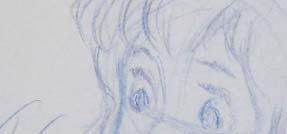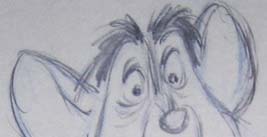Albert Hay Malotte (1895-1964) was composer at Walt Disney's Hyperion Avenue studios from 1935 to 1939. He wrote the music for Alpine Climbers, Little Hiawatha, Ferdinand the Bull and The Ugly Duckling, yet he is best known as the composer of the most popular musical setting of The Lord's Prayer in the English language, 1935.
These are his lecture notes on "The Relation of Music to Animation" from 1937 (a copy that once belonged to animator Bob Youngquist).
Though this usage of music today is considered old-fashioned, to me that is more out of ignorance than anything else.
In my experience, the best directors have musical backgrounds, or at least can read music and have a sense of rhythm. Personally, I had never more fun than directing and editing musical stuff.
(Note that Al(bert) Malotte obviously is NOT Al(fred) Milotte, the True-Life Adventures cameraman...)
[Added later: If this kind of thing interests you, check out these Category Labels:
Barsheets (about barsheets) and
Beatronome (a little PC aid to animation timing that I wrote in 2006). At the first label you will find a comprehensive description on how to read the original bar sheets (with several original examples), as well as four complete classic Disney short films with their original barsheets deployed as visual and audible aids for better understanding.
That said, above document from Al Malotte was to my knowledge the first correct description of the musical timing, as originally invented by the Disney studio for Steamboat Willie, to be found on the web. Carl Stalling took the method with him to Harman-Ising when he left Disney in January 1930, but they made the mistake of pre-recording the music track before animation was done, thus locking themselves to the pre-established beat. At Disney, the barsheets could be changed if the animation called for it. Then, when all animation was done, the musician would finalize his score.]
Labels: AAC, Barsheets, MyPicks, Other Disney






















































